For many of us, there’s nothing so marvelous as the perfect bike. Even as a total noob, when I bought my first mountain bike, I tried 16 different bikes, most of which I liked, but none really stood out above the others. Then, just as I had resigned myself to taking home one of the “okay” bikes, I asked about a model the salesman hadn’t shown me because it was above my price range. He reluctantly pulled the bike for me to take a test spin. After scarcely a lap around the parking lot, I knew this was the bike. It was as though this bike had been custom designed just for me. Out came the Visa card and off I went with my new, perfect ride.
Since then, I have refined my tastes and become more particular about what defines the perfect bike for me. While happy to ride most anything, there’s something special when everything fits just right. For those with particular tastes, be it geometry, component performance, or just appearance, customization offers the opportunity to make our ride both unique and truly our own.

Customization ramps up with a complete custom build. While less common, many riders like the idea of selecting a frame and then choosing each and every component. Usually it’s the more expensive components which get this ball rolling. Experienced riders may have a preference for things like suspension forks and wheelsets, and the odds of their preference being part of a standard build kit are slim. Of course, manufacturers and shops can’t produce fully-custom parts packages as economically as standard build kits, so price ramps up quickly as well. Once you’ve gone to the expense of swapping out a fork and a wheelset, you may as well build the bike from the ground up and get exactly what you want in every nook and cranny of the frame. Cockpit length is a key component of good fit and can be adjusted if your body size falls between bike sizes by changing stem length. This also tweaks performance as a shorter stem will provide quicker steering. Similarly, handlebar width relates both to direct rider comfort and steering performance. A good shop will take the time to make sure you leave with the optimum combination.

The ultimate level of customization comes in designing a custom frame from a blank piece of paper. There are small boutique shops and custom builders who will weld a frame to your exact specifications. This is both expensive and only of value if the buyer knows exactly what he/she wants and that it doesn’t exist among the myriad choices already available to customers. Frame material options are usually limited as well, further diminishing this option’s appeal for many.
Our Most Recent Customization Experience
My latest custom bike purchase was actually for my son, Miniskibum, who had outgrown his size-small 2005 Trek Fuel EX 5.5 which we had bought used a few years earlier. Not only was it too small, it had been abused hard both before and since we acquired it, and it also tipped the scales at a harsh 35lbs 13oz. We didn’t originally intend on going custom with this recent upgrade, but it proved to be an excellent option.
First Question: One bike or two?
Miniskibum is a dedicated and skilled all-mountain rider who lives for the chunk. However, he is also on his school’s cross country race team. I first considered trying to go used again and get an all-mountain rig and a race rig. Although MIniskibum races, he’s stuck with his old man’s DNA, which means less than stellar aerobic capacity. Even with the lightest race rig on the planet, he’s probably not going to be on the podium… and he really loves the gnar. So we decided to spend the $$ on a quality all-mountain bike and save weight where we could to lighten it up for the races. Worst case scenario, it would still be a good deal lighter than the ol’ Trek Tank.

Second Question: Which bike?
I began letting Miniskibum try new bikes long before I would actually buy one. While a frame size too big, he rode my Yeti Five Carbon. Yeti runs longer top tubes than most, and this proved too awkward, so no love there. On our Spring Break Singletrack Trek, he got to try two more bikes. The first was a Knolly Endorphin which took a few rides for him to adjust to, and it became a possible option. Later in the trip, he rode a Santa Cruz Bronson which he took to immediately and grew to love even more over an 18-mile demo ride covering every kind of terrain imaginable. He had settled on his bike–out of the box.
The problem was that Colorado Springs had only one Santa Cruz dealer… and it’s a catalog/internet shop. I usually prefer to do business with a full service shop (note: since our purchase, another full service shop has picked up the line). We thought about checking with the shop from which we demoed the bike back in Utah to see if it was available for sale at the end of the season, but that meant Miniskibum would be spending the summer on an increasingly decrepit bike that had become a maintenance nightmare.
Then one of our local bike shops, one that specializes in custom builds, announced they were having an Intense demo day. The Intense Tracer seemed to have specs similar to the Santa Cruz Bronson, so I signed us up for a demo. After a few hours on the Tracer, Miniskibum surprisingly declared this bike marginally better than the Bronson. So now we had a bike and a shop, it was just time to 1. negotiate a build kit and 2. get approval from the Minister of Finance (Mom).

At the time, Santa Cruz had developed an economical build kit for the Bronson, which allowed more people to get such a quality frame. Intense had also developed a “Foundation” build kit, which they were moving heavily on their Carbine model, but it had yet to come to the Tracer. Here’s where the big surprise of our experience came in: of all the reasons to go with a custom build, saving money usually isn’t one of them. However, the shop had developed their own version of a Foundation kit which they would put on the Tracer, giving it comparable or better performance than Intense’s standard entry level kit, and at a lower price. In addition, it would be easy to upgrade, for a reasonable amount, any specific components we may have thought were lacking. For the same price, the shop gave us the option of two additional customizations: conversion to a 1×10 drivetrain, saving us the maintenance of a front derailleur as well as almost a pound, and conversion to tubeless wheels. We knew we would take both.

Serendipity Strikes
While at home debating the merits of certain upgrades, the shop owner gave us a call. While at the demo, we had each entered a drawing and Miniskibum’s name came up. The prize? 30% off any bike we had demoed! Now we had a new decision to make: we could simply take the savings and run, upgrade the build kit for a similar price, or keep the same build kit and upgrade to a carbon frame. Nice problem to have, eh? We finally settled on getting that sexy carbon frame with the kashima coated shock. In the end, Miniskibum ended up with a beautiful carbon fiber, 27.5″ wheel, 6″ travel, American-made all-mountain rig of his dreams. As for racing, it’s definitely not a competitive cross country bike, but at sub 28lbs, it’s still a good 8 lbs lighter than the rig he was racing on last year.

Key Cost Saving Components in our Custom Build
The biggest custom savings came from the X-Fusion fork, which runs about $400 less than a comparable RockShox or Fox. Miniskibum noticed no significant difference here, so this was a no brainer. Only time will tell about long term durability, but my Fox forks seem to need a lot of maintenance, so I’m not concerned.
Tires are Vee Rubber Trail Takers, which look like, and seem to perform like, Kenda Nevegals. Miniskibum say’s they’re perfectly adequate, but he’s looking forward to when they wear out so he can replace them with his beloved Continental Trail Kings.

The build saves money by skipping household names on certain other components like handlebar, seatpost, and stem. The brakes are Avid, but they are the entry level Elixir 1s, which are still a huge upgrade from the mechanical discs he was running on the ol’ tank. They provide plenty of reliable stopping power, giving him more confidence to rip the steep gnar.

In the end, our custom bike buying experience was exceptional thanks to a great shop and some really good luck. If you’re ready to replace your rig and you think you may like a tweak here or there, or even a bicycle built just for you, it’s worth seeking out a shop which can accommodate your desires. Even without winning a drawing, you may end up with more than you bargained for, and I mean that in a good way.

Thanks to Mike & Chelle at Timberline Bikes for taking such good care of us!












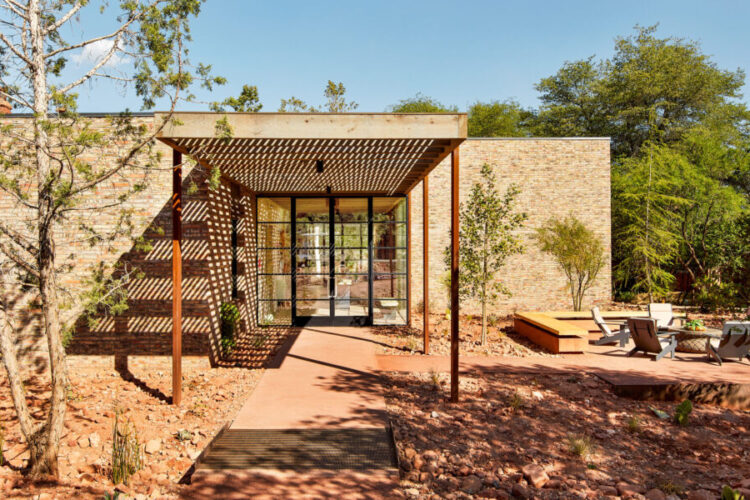

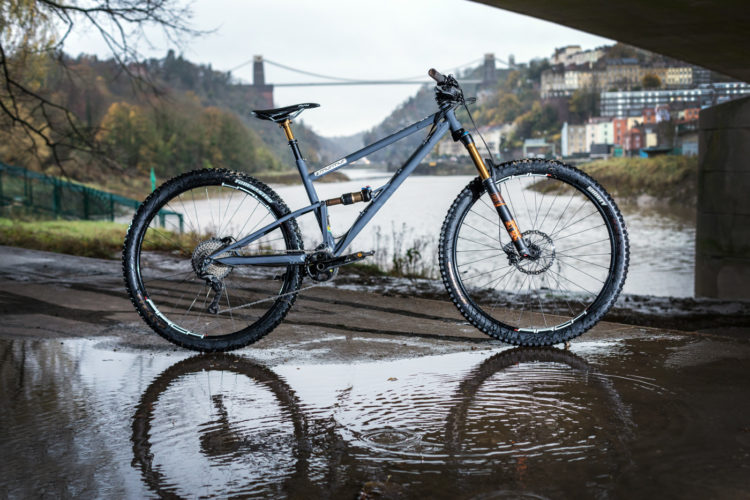
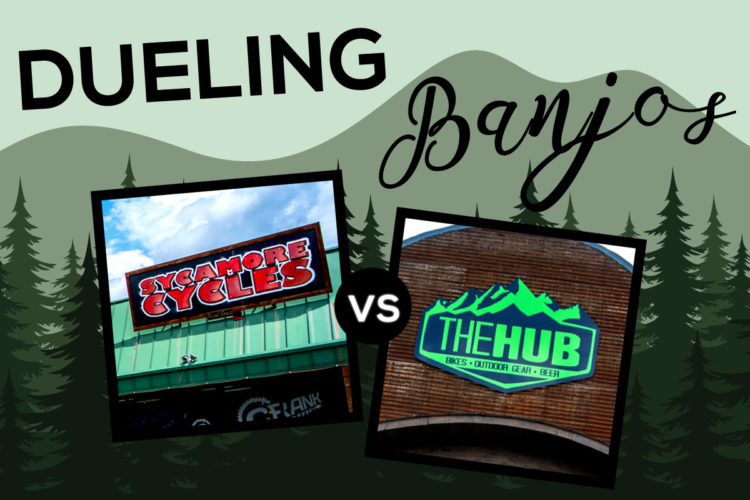
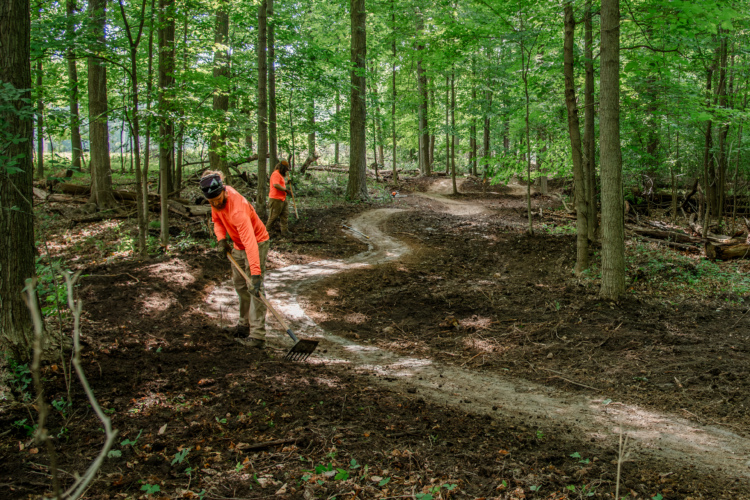
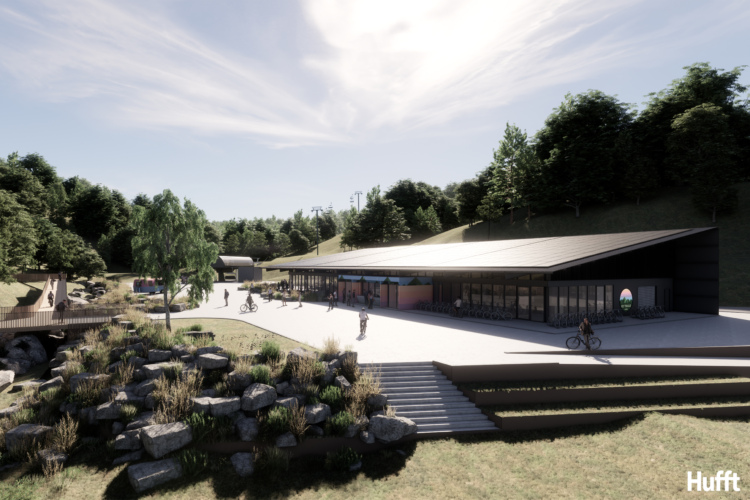

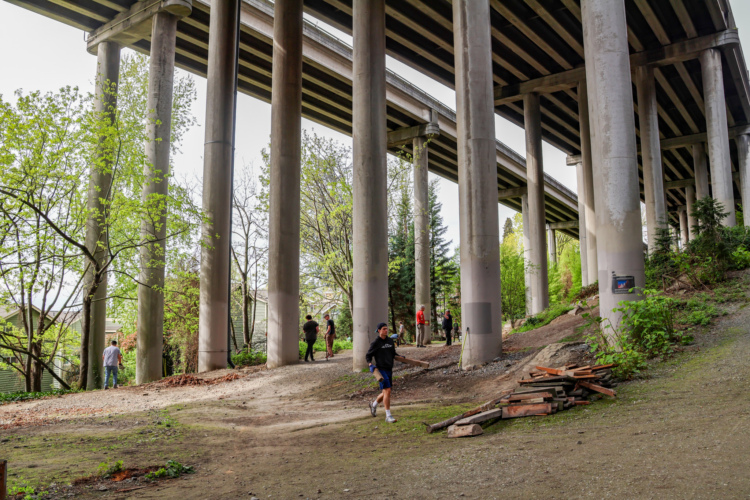

7 Comments
Dec 5, 2014
My SS was a custom build like this one, and it's by far my favorite bike. I'm in the queue now with Zukas Cycles for a custom all-road/monsterCX frame, can't wait to get it!! My first custom frame, really looking forward to it. Sadly, it's a few months out still.
Dec 5, 2014
Congrats on your new acquisition--as Tom Petty says, "The Waiting is the Hardest Part!"
Dec 5, 2014
Dec 5, 2014
As you say, the rewards are priceless and enduring. I had a similar experience skiing with my girls (the never took to the cycling).
Dec 6, 2014
Dec 6, 2014
Dec 5, 2014
I wouldn't say a Charge Saddle is a No-Name saddle. If a stock saddle is popular enough to merit a solo sale then its probably a pretty nice saddle. Just saying.